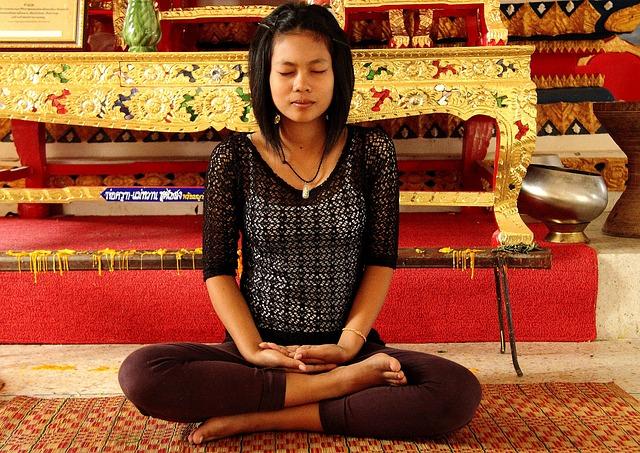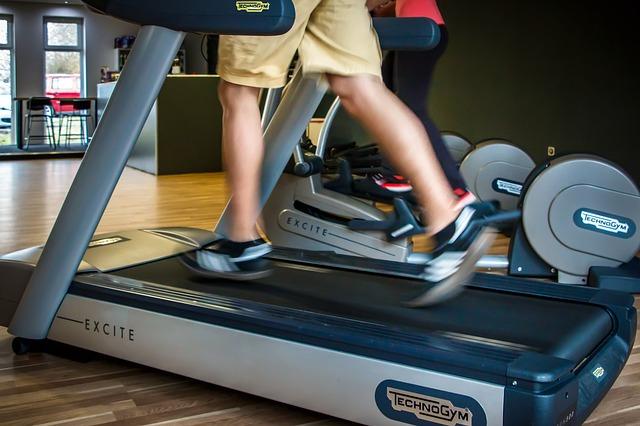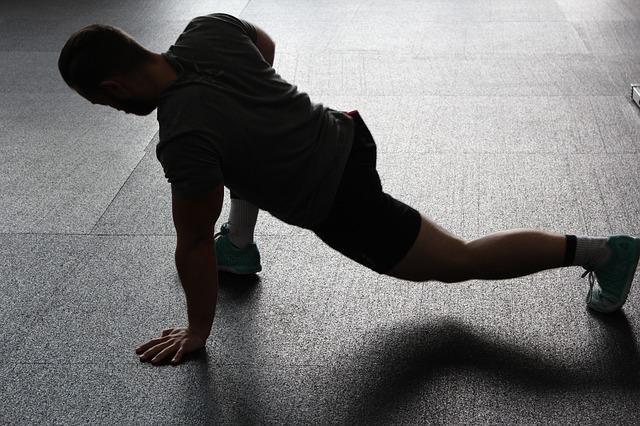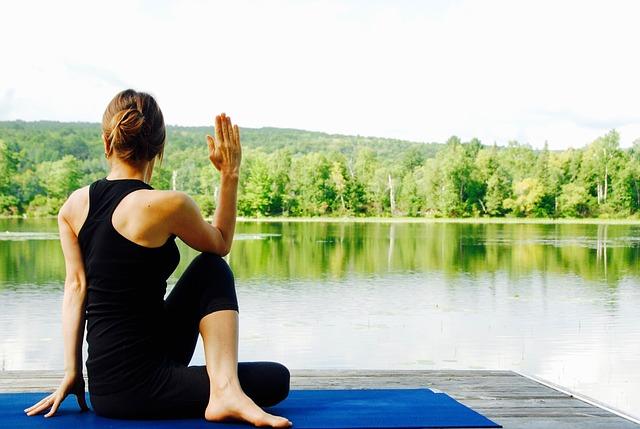Blog
Breathing: For Better or Worse
What quality of breath are you drawing?
Many Americans practice chronic shallow breathing; this leaves us well short of our best when it comes to staying happy and healthy. Here are reasons why it helps immensely to relearn how to draw a good breath!
- Every single cell needs a constantly refreshing supply of oxygen to perform cellular respiration go about its daily business.
- We breathe up to 18 times a minute This translates to a lot of opportunities for you to get either not enough or just the right amount!
- Better circulation keeps you keep sharp and focused and your immune system and skin strong in their fight against bacteria and infection.
- Your heart rate will lowers and blood pressure will flow more evenly.
- Breathing thoroughly will detoxify your body
And these are only the physiological benefits! Deep breathing has been shown to make you feel calmer and happier.
It feels best when your lungs are getting their fill
This is a matter of using the diaphragm, the sheet of muscle that separates the thorax from the abdomen; the diaphragm is the main muscle involved in the breathing process- many people are unaware of this fact. When it comes to relearning how to breathe, it is best to start here.
Known most commonly as deep breathing, a diaphragmatic breath begins when you contract the diaphragm and air enters the lungs. In this way, the abdomen expands (rather than the chest) and oxygen saturates all of the necessary cells. Diaphragmatic breathing is the natural state of resting breath for mammals when they are relaxing in the wild.
Chiropractic helps make diaphragmatic breathing easier by adjusting nerve interference in the phrenic nerve, which is the main power source for the diaphragm located between C3 and C5 in the spine. We can help you relearn how to breathe and ensure that your diaphragm and the accessory breathing muscles are in great working order!
Dr. Gregory Lind, D.C.
The Real Value of Cardio
Cardio is exercise at its most basic: it is rhythmic and continuous; it gets your heart rate up and utilizes major muscle groups to burn calories. The reason it works for so many people is that it is relatively low intensity, requires next to zero knowledge and equipment, and conditions your heart to operate at a higher level. Check out our article on walking for some of the most basic health benefits you can get from aerobic exercise.
Cardio is one of the least efficient ways to burn calories.
If you are trying to lose weight however, your time and energy could be spent in better ways. Cardio lacks in efficiency because you burn a baseline of calories while working out and none after. Exercise Post Oxygen Consumption is a scientifically measured rate of elevated oxygen intake in the period after strenuous activity. Essentially the body is trying to erase its oxygen deficit and this afterburn effect helps you lose weight faster. Exercises such as high intensity interval training, while more difficult in nature, are much more efficient in the weight loss department. By constantly forcing your body and heart to adjust to different levels of intensity (think spring, jog, uphill, downhill), your metabolic rate remains elevated for a long time after workout.
If you love cardio, stick with it.
I would never tell you to stop doing something that is good for your body, especially if it is something you enjoy. This blog is simply to show you that if you are interested in losing weight, there are more efficient methods. In fact, combining weight training with aerobic exercise is one of the most efficient methods for burning calories (while simultaneously building muscle). Above all, eating well is the key to losing weight effectively. So keep doing what you love and come visit us if you are looking to optimize your health plan this new year!
Dr. Gregory Lind, D.C.
How to Stop Leaving Work with a Stiff Neck
Stiff necks are epidemic among deskbound workers.
As the main portal between head and body, the neck is subject to the weight and position of the head above and the curvature of the spine below. Spending hours at a desk, often hunched over in front of the computer in the forward head and shoulder posture destabilizes your entire support structure.
- The forward pull of the head magnifies weight to the spine, creating excessive pressure on the intervertebral discs in the lower neck
- Muscles of the upper back are constantly firing in order to maintain a counterweight against the pull of gravity on the head
- The upper back and shoulders round, further intensifying the problem.
Given long enough, this repetitive trauma will contribute to degenerative problems in the neck, but more likely you will go through an agonizingly long period of muscle strain. That stiff neck is not normal and it’s time we start doing something about it.
Healing a stiff neck with the help of Family Chiropractic & Natural Healing Center
At our office in Milpitas, we focus on the following when it comes to healing a stiff neck:
-
Begin by relieving muscle tension
-
Improve blood circulation to the injurious region, to bring healing nutrients and oxygen to the embattled cells
-
Improve range of motion
Our techniques involve gentle adjustment of the spine to release pressure from nerves. Furthermore, we provide spinal traction that targets tight muscles and helps to elongate them, creating space for the blood to flow in to the aid of the muscles in your stiff neck! Once we have established a lessening of the stiffness and a trajectory of healing, we show you simple exercises and stretches that can be employed throughout the work day to keep those muscles from returning to that stiff state! To create a coordinated plan for healing your stiff neck, give our office a call in Milpitas to schedule an appointment today.
Dr. Gregory Lind, D.C.
Vitamin D In Winter Time
Are you part of the majority of people who are deficient in D?
Vitamin D is one of the most important fat-soluble vitamins that we just simply can’t get enough of. In the summer time, 10-15 minutes of exposure to the direct sunlight allows our skin to produce enough of what we need on a daily basis, but this dynamic shifts in the winter when few places in North America receive enough sunlight to allow us our daily ration. So even if you are out in the winter sun, you may not be reaching your daily allowance for D. This vitamin is well known for its importance in preserving bone density and allowing for calcium and phosphorous absorption, but it is also important for supporting the immune system and fighting illness. Vitamin D also helps to fend off weight gain and even encourage weight loss, as well as fight depression, especially the Seasonal Affective Disorder which is thought to occur in some 20% of Americans.
Getting enough vitamin D in winter means adding it in through your diet
This would be the easiest (and tastiest) way to add it in, although supplements are also a consideration. Many dairy products are fortified with vitamin D, but consuming it naturally means getting fishy: among some of the best sources of vitamin D are cold water fish such as salmon, cod and halibut, and shellfish including shrimp and oysters. A less thought of, but steady source of D are mushrooms, with some varieties even being fortified with more of the vitamin.
Pay special attention to your body this winter with a little help from Family Chiropractic & Natural Healing Center.
We want to help you feel your greatest even when the hours of daylight are shorter and the weather is dreary. Whether this means regulation of the nervous system through chiropractic adjustment or the treatment of tense muscles; improving range of motion or creating dietary awareness, we are there for you! Give our office in Milpitas a call to schedule an appointment today.
Dr. Gregory Lind, D.C.
The Cool Down
How do you finish your work out?
We ask this question because there is one important little step which is often left out of many exercise routines: the cool-down. You have worked hard and earned the endorphin boost that is surging through your body and now you are ready to hit the shower and get on with your day. But consider taking a few extra minutes to gently stretch the body and practice deep breathing, to make the transition back to normal life extra smooth! Cooling down is low-key and it feels great: it’s all about lowering your heart rate and treating any regions that may have incurred even slight stress during the exercise (think: lower back; shoulders).
Try Child’s Pose
Child’s Pose is a basic yoga move that has wide ranging benefits. In the wake of a work out in can be used to release tension in the back, stretch the hips, thighs and ankles and lower the heart rate. This is a resting pose that encourages you to relax and focus on releasing tension while breathing deeply.
- Start on hands and knees
- Spread knees as wide as hips; keep big toes touching
- Sit on your heels
- Exhale; lay torso down between thighs
- Lay hands, palm up, beside the torso and feel tension release from shoulders
- Rest and breathe deeply between 30 seconds and three minutes
Family Chiropractic & Natural Healing Center helps you optimize every work out.
From the warm-up to the cool-down and everything in between, we believe passionately in the importance of exercise and we want to make sure that your body is firing optimally while you perform. Our services help you by regulating the nervous system, improving range of motion and treating tense muscles, all factors that help you excel in working out and in life! Give our office in Milpitas a call to schedule an appointment today.
Dr. Gregory Lind, D.C.
The Warm Up
With winter fast approaching, there is no better time to talk about warming up!
Warming up truly means warming: a gentle routine should see your body temperature rise and the muscles follow: the transition from cold, contracted muscles to loose and warm ones makes a world of difference when it comes to injury prevention and range of motion improvement. At Family Chiropractic & Natural Healing Center, we want our warm ups to lend elasticity to the muscles, allowing you to move on to deeper exercise with your muscles fully able to contract and relax without injury.
When it comes to warming up, patience is a virtue.
Especially in cold weather, your muscles need a little more time. Rather than blitzing them with static exercises, focus on dynamic warm ups that use only your body weight (or simple things like a foam roller) to get your muscles in a state of optimization that will allow you to reap the greatest reward from your work out.
Keeping your fitness up in winter takes dedication.
The reality is we are less likely to be as proactive about working out during winter and this is a reason why we see increased reports of muscle and joint pain during winter months. We help you stay on top of your fitness during winter so that you can:
- Maintain and control weight
- Improve circulation
- Keep muscle pain and joint stiffness down
- Strengthen muscles
These are things that keep you truly healthy, despite the grey weather! Give our office in Milpitas a call to schedule an appointment today!
Dr. Gregory Lind, D.C.
Stiff Shoulders: a Desk Working Epidemic
Tight shoulders are epidemic
If you are coming home from a day spent at the desk with tight shoulders, or an upper back full of knots, you are among a legion of Americans whose entire spine is up against it in the workplace. What will differentiate you from the crowd is your willingness to do something about it. We are able to function with a stiff, sore upper back because it usually doesn’t progress beyond this stage; our muscles get used to that tight, scrunched up position you constantly demand of them and they adapt: the upper trapezius constantly contracts, pulling the shoulders up and holding them there while the middle and lower trapezius weaken from lack of use.
How do we fight tight shoulders on the job?
Stretching is the number one way to fight against the physical (and mental) stress that accumulates during your eight hour work day. You can relax a stiff neck and tight shoulders from the space you are sitting in, which will help you reset, refocus and refresh. Remember that if your muscles are super tight, they probably don’t want to be stretched too aggressively for fear of injury. Keep the movements simple and always remember to breathe.
- Try a deep breath. Inhale and lift your tight shoulders up slowly toward your ears. Exhale and let your shoulders fall and the tension along with it. Repeat as many times as feels good.
- Neck circles: lower right ear to the right shoulder, then roll it down across the chest so that left ear is down toward left shoulder.
- Squeeze shoulder blades together to open up your chest
Try doing these once every hour or whenever you think of it.
How does the chiropractor help your tight shoulders?
We help by identifying the root cause of your pain and stiffness- for example, a sore neck could be symptomatic of tight hips, but it may not appear that way to you. We help identify and adjust spinal imbalances that create nerve irritation and focus on improving range of motion. We show you the zones that matter for maintaining good posture- the core, and load-bearing regions, and focus on strengthening them so that a day at the desk doesn’t take too big a toll. For help on protecting your body against the rigors of daily work and releasing those tight shoulders, give our office in Milpitas a call to schedule an appointment today.
Dr. Gregory Lind, D.C.
Healthy Hips: The Load Bearing Joints of Happiness
The health of your hips is vastly important
Strong and mobile hip joints are not only crucial for athletic performance and agility, but also for the initiation of basic daily movements including rotating and lifting. Unfortunately, more people than ever are shifting these responsibilities of the hips onto the lower back which is a curse for wellness: the muscles in the hips are firing less than they should and the lower back is assuming more burden than it should. A lifestyle that involves a lot of sitting may just be the most formidable foe that our hips must face.
The hip flexors are a group of muscles that allow for range of motion in the lower body and help us to bend at the hip without pain. When we sit a lot, these muscles lock into a shortened position and become tight; the act of sitting literally conditions the hip flexor muscles to remain shorter, meaning that when they are called upon to perform basic actions, these tight muscles are suddenly stretched too violently and pain or injury can ensue.
If modern life is going to pit our hips against more egregious odds than ever, then protecting and preserving the health of our hips necessitates a more proactive response than ever. This is a question of biomechanics, and solving the pain, stiffness and potential for injury that comes with compromised hip joints requires knowledge of how our body can work in unison. Targeted strengthening and stretching is a great way to restore lost mobility and begin the process of releasing tight hip flexors. Chiropractic adjustment is great for restoring spinal balance in the lower back, reducing nerve irritation and improving range of motion. At Family Chiropractic & Natural Healing Center, we support healthy hips and pain-free lower backs by teaching awareness; give our office in Milpitas a call to schedule an appointment today!
Dr. Gregory Lind, D.C.
Staying Fit in the Winter Months
Winter is often the time when people throw their personal fitness gains out the window, exercising less and eating more than any time of the year. It is most likely linked to the shorter daylight hours, which leave people with a small window of time between the end of work and dusk in which to get outside and exercise in considerably colder weather. So a winter fitness plan necessitates some shifts, both in attitude and activity; for example, waking up early and fitting in a bit of exercise before work, or breaking up your activities into smaller chunks of time throughout the day. However you do it, the important part is that you do it! Remember, that 30 minutes a day is all it takes!
- Running in the winter can be fun, given the appropriate equipment that keeps you warm!
- Go to the gym, or make a home gym: make a plan that fits your budget constraints. While the gym is a great place to get guided instruction, there is plenty to be reaped from fitness DVDs, blogs and YouTube!
- Nutrition: worth repeating to focus on vegetables and fruits, even if you consume extra calories in the form of Thanksgiving and Christmas dinner.
- Playtime: make it fun; get out in the snow and sled or make snow angels.
- If all else fails, take a walk: by yourself, with the family or the dog, 30 minutes of brisk walking is enough to get your body moving, the heart rate slightly higher and muscles moving minimally.
Exercise is also important during winter because it keeps up the health of the immune system which is important for people who don’t like being bedridden by the common cold or seasonal flu! At Family Chiropractic & Natural Healing Center, we urge you to not lose sight of why you made those fitness gains during summer in the first place. Cold weather should not make you soft, but it should make you adjust. If you need help getting enthused about working out during winter and keeping the stress of the season off your back, give our office a call to schedule an appointment today.
Dr. Gregory Lind, D.C.
Spinal Health Awareness: An Action Plan
Spinal health doesn’t need some arbitrary “Awareness Day” or week or month; the truth is, wherever you are, whenever you can, it is always worth improving your spinal health. At Family Chiropractic & Natural Healing Center, we believe that one of the best ways to enjoy a long life is with a healthy back, but we also know that modern life stacks the odds against those who try to keep it healthy! In truth, modern lifespans are now exceeding the shelf warranty of our spines, so it is going to take extra, concerted effort to keep our spines healthy into old age.
Spinal health is fluid: it doesn’t “start” when you wake up, or “stop” when you go to sleep. Throughout the day and night, we must be cognizant of posture and listen to our body when it sends signals of pain or stiffness to the brain.
- Let’s begin with the morning. Don’t just jump out of bed; instead, set the tone for a day full of back health by using your arms to slowly support you into a sitting position, before swinging your legs to the floor and standing up.
- If you can find the time after your morning shower, do a few gentle stretches to ease the muscles of your back and body into the swing of the day. Even 5 minutes of gentle stretching will limber your body against the rigors of a day that for many of us is spent sedentary.
- Throughout the day, remain aware: If you feel your head creeping forward, or your shoulders scrunching together, then correct! Keep your shoulders back and relaxed, your head centered over your spine and your eyes facing forward, so that the neck follows: it should never be down or up for a consistent period of time!
- Avoid sitting for too long in one go and break the monotony by taking micro-breaks: 2 minutes of brisk walking to the water fountain, or 2 minutes of deep breathing and stretching.
- Try stretching before bed. It influences relaxation by releasing tension from muscles and gets you ready to sleep deeply.
It’s time to wake up. Feel that constant ache or stiffness in your lower back? Don’t accept it as normal! Call our office and schedule an appointment today so we can establish a baseline of health for your back.
Dr. Gregory Lind, D.C.









